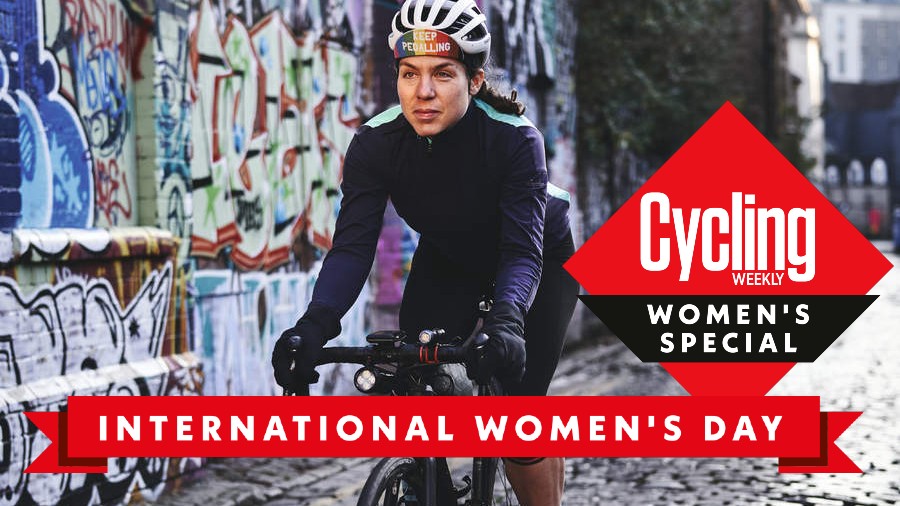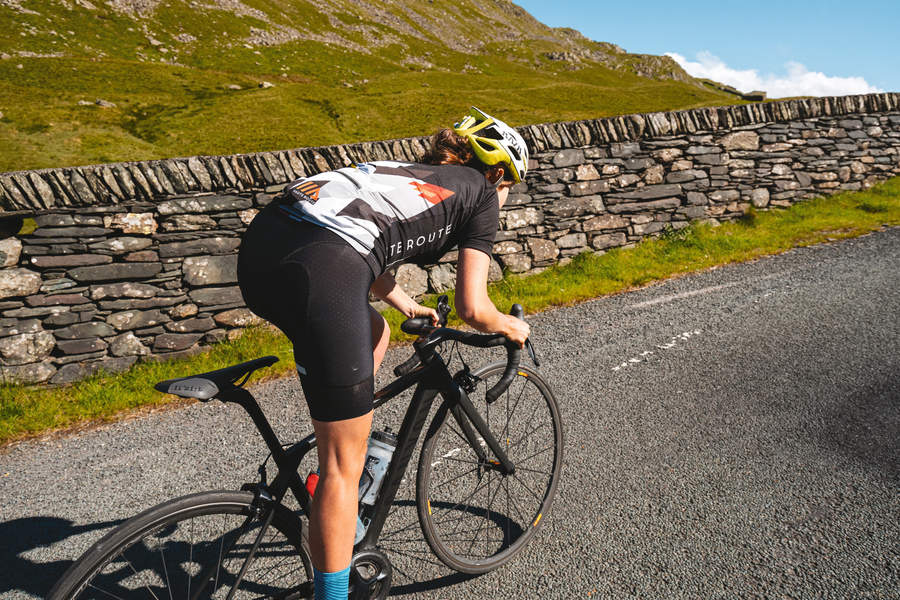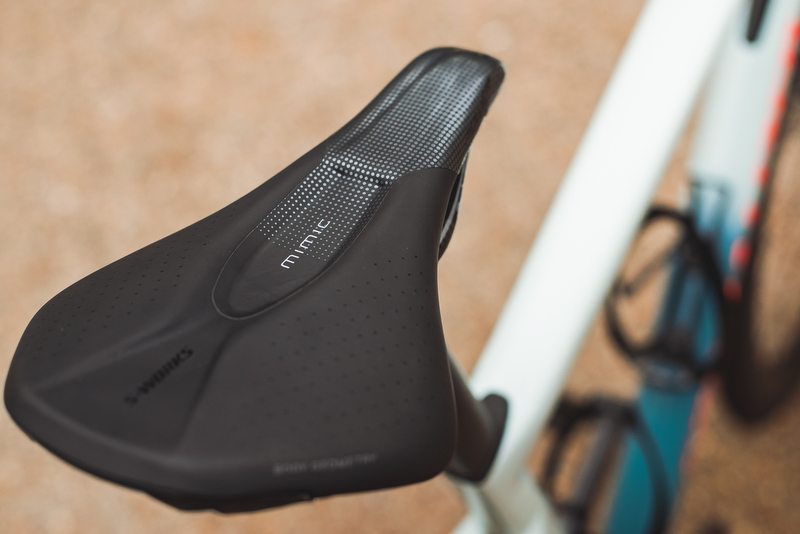The science of sitting comfortably: How can the cycling industry help more women ride bikes without pain?
The women we know have been put off cycling by saddle discomfort are the tip of the iceberg, many suffer in silence and promptly exit the sport. First female rider home at the 2016 Transcontinental, Emily Chappell, explores what the cycling industry is - and could be - doing to get women riding comfortably

This article forms part of a week of women's focused stories, in celebration of our Women's Special edition of Cycling Weekly Magazine, one sale from Thursday, March 10. See the full schedule of upcoming articles here.
I’ve heard more than my fair share of saddlesore stories, but even I was shocked when I received a message from a successful ultra-cyclist after a short training ride. “It suddenly dawned on me that I was cycling without pain,” she enthused. “Normally a ride begins with intense pinching agony while I find a comfortable way to sit. Now I just fit! Is this how nice cycling is for everyone else?”
The rider in question had recently recovered from labiaplasty – a surgical procedure that reduces the size of the labia minora. What shocked me was not the radical solution she had resorted to, but the fact that she had, until then, been in agony on every ride, and assumed this must be normal. I’ve endured some painful days in the saddle - especially towards the end of multi-day events, when I’m so run down that my body doesn’t have any energy left to fend off infection, and every pedal stroke brings fresh agony - but it had never occurred to me that for some people, this was a permanent state of affairs.
Cycling’s culture of “noble suffering” has a lot to answer for. And as well as those suffering in silence, there are all the riders we’ll never get to meet, because the pain they experienced when they first sat on a saddle was enough to deter them from cycling altogether.
It swelled to about the size of a satsuma. I was sent home, and essentially just cried in pain for three days.
Carly, a theatre professional from London, was so excited when she got her first bike that she rode it every day, ignoring the increasing discomfort in her vulva until she ended up in A&E, being told by doctors that an infected follicle was on the verge of sepsis.
“It swelled to about the size of a satsuma,” she recalls. “I was sent home, and essentially just cried in pain for three days.”
This somehow didn’t put Carly off cycling, but now if she notices a flare-up beginning, she’ll take three days off the bike, and dose herself with strong antibiotics to keep infection at bay. She’s hoping laser hair removal will improve matters, but currently her rides are limited to short pootles close to home, “I’d love to ride in the countryside, or even go on a cycling holiday,” she tells me - “but I can’t take the risk.”
The latest race content, interviews, features, reviews and expert buying guides, direct to your inbox!

“We don’t know how many women give up cycling and are lost from the sport,” laments Phil Burt (philburtinnovation.co.uk) who spent twelve years as Head Physiotherapist at British Cycling, and has worked with three different Olympic teams. “The ones we know about are the tip of the iceberg.”
Burt now offers saddle health consultancy and specialist bike fitting to riders of all levels, and admits that women have thus far been “poorly served” by the cycling industry. A survey he conducted with Team GB’s female riders between the London and Rio Olympics surprised him, with “a hundred percent positive response” in riders admitting saddle sores were a problem. Many had never mentioned it.
It’s this reticence, as much as the lingering male dominance in bicycle design, and the perceived complications of the female anatomy - Phil notes that women’s genital anatomy has nine distinct presentations, compared to only one among men - that makes saddlesore such a conundrum. Even now, many bike industry professionals find it difficult to address the topic head-on, speaking euphemistically of “sensitive tissues”, rather than using words like “labia”, “vulva” and “genitalia”.
What are cycling brands doing?

Dr Andy Pruitt is willing to speak more frankly. Pruitt has worked with Specialized and a number of their athletes, to find out what is really going on down there. As well as pressure-mapping, he and his team created clear plastic saddles, so that they could see what was happening to the genital anatomy as riders pedalled.
They had expected to find ischaemia – the restriction of blood supply to tissue – as a result of pressure between body and saddle. What they hadn’t anticipated was oedema, or swelling of the labial tissue, that caused it to protrude uncomfortably through the saddle’s cut-out. Since the 1990s, when Georgena Terry pioneered the cut-out for women, and Specialized introduced the grooved Body Geometry saddle in response to reports of erectile dysfunction among male riders, the assumption had been that to relieve pressure, you needed to remove material. This does work for many riders, CW’s tech editor Michelle Arthurs-Brennan won’t ride a saddle without a cut-out, for example.
For those not served by a traditional cut out, Specialized reinvented its existing Power saddle, which went “from a full cut-out, to what we call a supportive cut-out,” Saddle Product Manager Emma Boutcher explains. Its ‘MIMIC’ tech uses three different densities of foam, designed to emulate women’s soft tissue, meaning that pressure is dispersed over a wider area and blood flow is less restricted.
This redesign - which, like the original Power, has proved popular with men, too - would not have been possible without the cooperation of Specialized’s female athletes, who Boutcher tells me “are very vocal about what they’re feeling, and what kind of product they expect from us.”
It seems, yet again, that the most important step in seeking solutions to saddlesore, is creating an environment where women feel they can safely explain exactly what is happening when they sit on a bike.
Burt took a similar approach to his ongoing collaboration with Endura – the first product they overhauled was women’s bib shorts, with the help of a panel of “serious, highly critical female road riders.” The new chamois uses medical-grade silicone elastomer along with the traditional foam.
“The viscous flow of it is far better at dealing with pressure,” explains Burt. “The shorts accept the fact that women are different – wherever you put the pressure, it’s dissipated in a much more safe and comfortable way.”
Like the work Specialized has put into the Power saddle, the development of Endura’s Pro SL women’s bib shorts may benefit men, too. The team are currently developing an equivalent men’s chamois, and Burt reports that the gel inserts “are going down fantastically” so far.
It’s not always about the saddle

A bike fitter at heart, Burt is quick to warn that “it’s not always about the saddle,” and issues a torrent of advice on how riders can improve matters by setting up their bike differently, without resorting to surgery, or the costly process of trying multiple saddles. His 2020 edition of his book ‘Bike Fit’ included two pages on saddle comfort, the new edition out in April boasts an entire chapter.
“We don’t really sit on bikes – we sort of perch on them,” he points out. Cycling is by no means a static activity, and a saddle needs to accommodate the rider through a full range of movement, giving support where it is needed, and getting out the way where it is not.
Cyclists who find themselves constantly fidgeting, and pushing back as they ride, should try a wider saddle, he recommends, warning those whose saddlesores always appear on the same side that their problem is more likely to be a physical asymmetry than anything to do with their hardware – something that may be remedied by building up their cleats, and reconsidering crank length.
For riders who complain of persistent vulval discomfort, Phil is a firm advocate of angling the front of the saddle down a couple of degrees – in 2015 he successfully campaigned the UCI to increase the degree of tilt they allow from 2.5 to nine degrees, as a result of his findings from the survey of Olympic riders.
Our solutions for saddlesore are evolving fast, in no small part because of an increased willingness among riders, coaches, physiotherapists and product designers to talk about the specific – and sometimes embarrassing – details of how people’s bodies connect with their bikes.
Making hire bikes comfortable
A post shared by Herne Hill Velodrome Women (@hhvwomen)
A photo posted by on
During Sam Holden’s first season as Women’s Cycling Development Officer at London’s Herne Hill Velodrome, he asked riders to complete a survey to help him identify obstacles to women getting involved in track cycling.
“One of the main things that came up,” he recalls, “was how uncomfy the saddles were.”
He describes the “hotch-potch” of ancient saddles that graced the velodrome’s hire bike fleet: “I imagine that the majority of them were made for the comfort of a middle-aged man in the 90s.”
Sam contacted Liv Cycling, to ask if they’d be willing to donate some women-specific saddles for the bikes, and within days a box of saddles had arrived.
“The key thing was getting them on the bikes that would be used for inductions,” Sam explains, knowing that this could be the key factor in whether someone decides to continue with the sport, or is put off on their first attempt.
“It’s not an issue that’s discussed now. In a good way. We’ve got women’s saddles, on the bikes, women are comfy on them – that was the point.”
The problem for pros
Saddlesores are a blight that affects elite cyclists and newbies alike – perhaps one of the most famous in cycling history is the boil that contributed to Laurent Fignon’s defeat in the 1989 Tour de France, which he lost by only eight seconds.
But I was not unduly surprised when it proved difficult to find a current professional cyclist willing to discuss their saddlesore experiences on the record.
“Unfortunately I can’t talk about it now,” apologises “N”, a World Tour pro who agrees to speak to me on condition of anonymity, “because I use a non-sponsor-correct saddle, and so I have to just avoid mentioning anything to do with saddles.”
She goes on to tell me of the undercarriage woes of other riders in the pro peloton, mentions a colleague who has recently had surgery, and shares some gossip about a well-known cyclist who embarrassed their sponsor by winning a grand tour on an off-brand saddle, after finding halfway round that they could no longer sit on the original.
“No women’s team should have a saddle sponsor!” protests “N”, bemoaning a system that does a disservice to athletes and manufacturers alike.
Getting on the right track

“Often when women tell me that they’re uncomfortable, the solution lies in figuring out where the pain is, and looking at the different shapes which might alleviate that pain,” says ride leader and cycling tech writer Mildred Locke.
“One of the most common trends especially for women who are new to cycling, is that they’re often using saddles that are way too padded, causing chafing,” Locke explains. “There’s this common misconception that the thicker and cushier the saddle, the more comfortable it’s going to be.”
Saddles that are too narrow are another recurring culprit, “this means that their sit bones aren’t adequately supported,” Locke says. Those who “end up with the soft tissues of their vulva crushed against the saddle’s nose” – may be well served by a saddle with a cut-out, to relieve pressure.
If analysing your current saddle woes, and looking for options that directly address them - as detailed in this article - proves unsuccessful, then booking in for a bike fit that includes pressure mapping could be key.
This article was published in Cycling Weekly magazine on Thursday, March 10. It forms part of our Women's Special week - which features a host of stories and features devoted to celebrating female cyclists.
Emily Chappell has been riding more-or-less full-time ever since she took the step from London commuter to cycle courier in 2008. Her journeys have taken her across several continents, through some of the world’s coldest winters, and to the finish line of the Transcontinental Race, in which she was the first woman to finish in 2016.
With a background in literature and academia, Emily is often drawn to the more cerebral side of cycling, reads any book about cycling history that she can get her hands on, and has written two of her own.